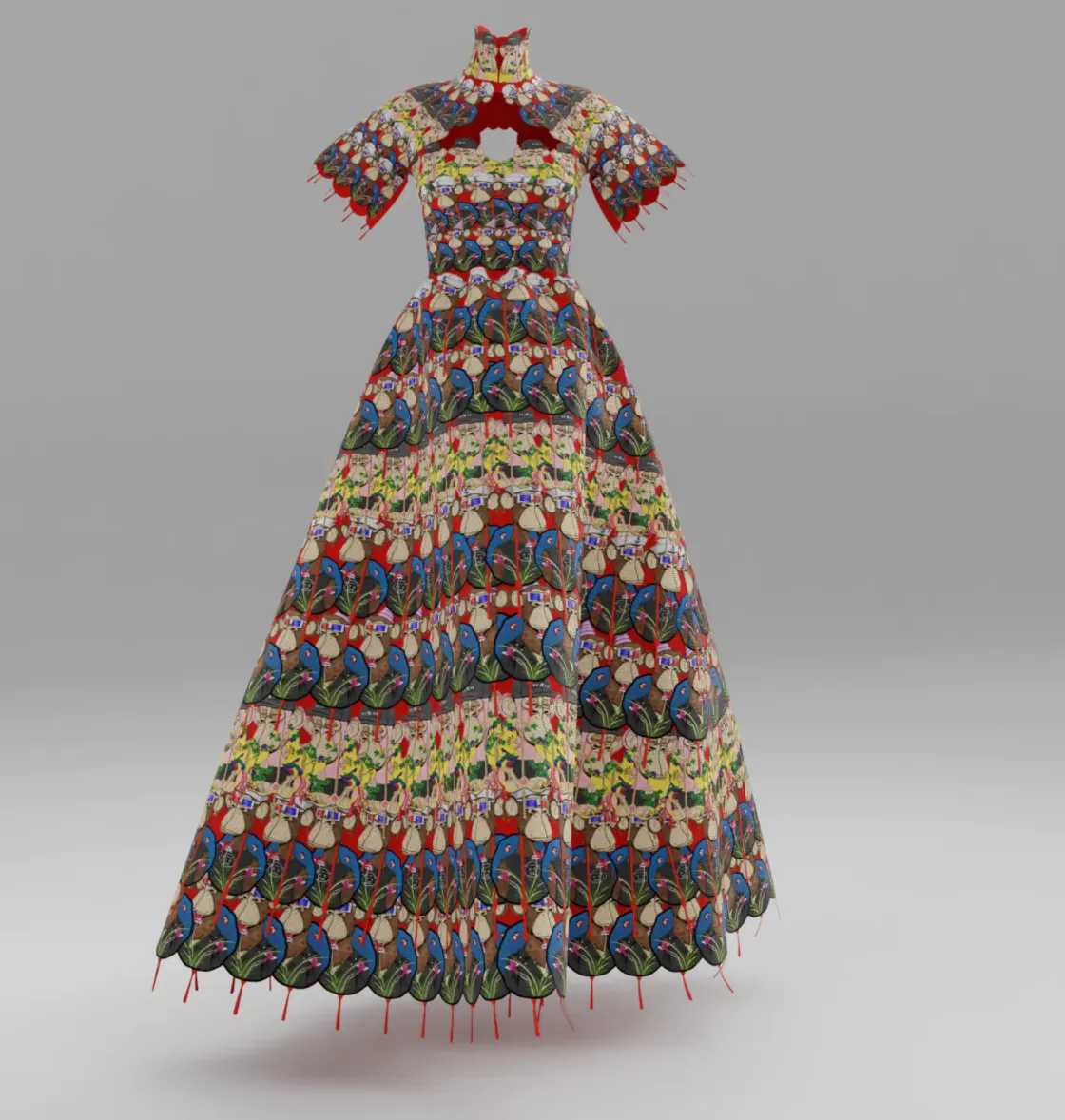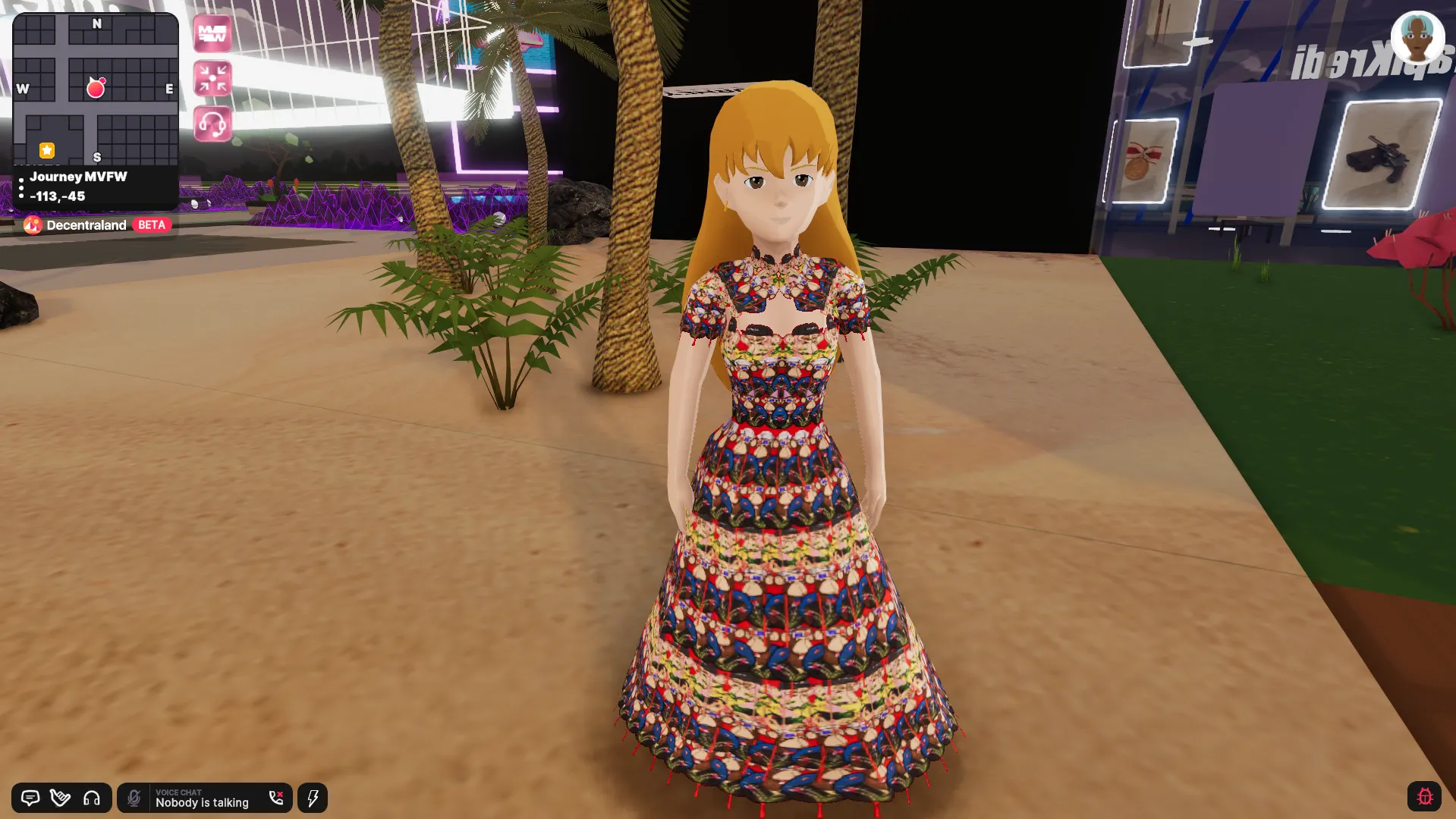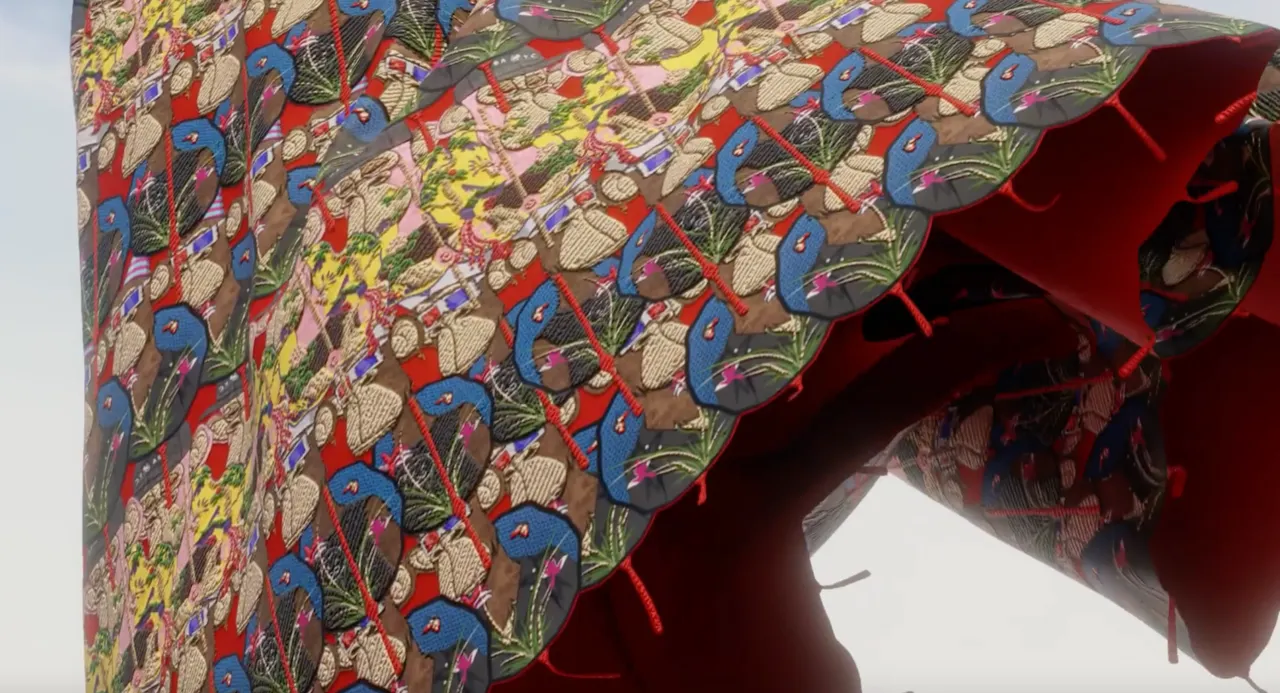When is a piece of clothing just a piece of clothing, and when is it fashion? If that question’s too perplexing, try this one: when should a piece of virtual clothing be considered virtual fashion?
Since Tuesday, leaders of top physical and digital fashion houses, assembled in the metaverse, have put their best answers to that query on display at the second-annual Metaverse Fashion Week.
To some of these designers, virtual fashion is defined by its unique potential to reach as many people as possible without sucking up real-world resources. To others, fashion—even in the virtual realm—is still a matter of awe and singularity.
In that latter camp you’ll find Vivienne Tam, the revered Chinese American fashion designer whose first-ever piece of virtual couture is currently making waves on the virtual runway in Decentraland.
The piece, a virtual qipao dress digitally embroidered with the likenesses of three avatars from the popular Bored Ape Yacht Club NFT collection in a mandala pattern, is a one-of-one NFT, meticulously designed by Tam with the technical assistance of digital fashion platform Brand New Vision (BNV).

The dress marks Tam’s Web3 debut. For over 30 years, she has designed provocative, exclusively physical fashion pieces known for their distinctive East-meets-West style. A number of them feature in the permanent collections of such institutions as the Andy Warhol Museum in Pittsburgh and New York’s Fashion Institute of Technology. She's also displayed physical Bored Ape-imprinted apparel on real world runways.
The virtual realm, however, remained untouched for Tam until she was approached to craft an NFT fashion piece to commemorate the Council of Fashion Designers of America’s 60th anniversary. Tommy Hilfiger, Coach, Diane von Furstenberg, Michael Kors, Carolina Herrera, and Willy Chavarria were also invited to produce one-of-one NFTs to celebrate the occasion.
We’re thrilled to announce our partnership with the @CFDA on their first-ever exclusive collection of commemorative NFTs, “Lighting the Path of American Fashion,” in honor of their milestone 60th Anniversary celebration.
Visit https://t.co/r2AvJms8Ww to learn more and register. pic.twitter.com/0lKytmg50B
— bnv.me (@bnv_me) December 2, 2022
“The other designers basically took things they were famous for, historic elements, and made a digital version of them,” Richard Hobbs, CEO of BNV—which oversaw the translation of those couturiers’ designs into NFTs—told Decrypt. “But Vivienne, she made her piece completely relevant to Web3.”
To Tam, the experience of building fashion on the blockchain wasn’t jarring, nor did it feel like a redundant exercise in photocopying older works. Rather, creating in Web3 felt like a natural progression from the designer’s existing body of work.
“Being able to bring harmony, heritage and my history to something so new is exciting,” Tam told Decrypt. “But it’s not just about being new. It’s being a bridge from old to new, from East to West, from nature to digital.”
The dress, originally designed in photo-realistic quality on the Polygon blockchain with support from BNV, was purchased by Cathy Hackl, Chief Metaverse Officer at Web3 consultancy Journey and so-called “godmother of the metaverse.”
To Hackl, who chaired last year’s Metaverse Fashion Week, the one-of-a-kind NFT was the perfect representation of virtual fashion as an extension of the luxury and grandeur of physical couture, absorbed into a Web3 ethos.
“I wasn’t just getting an NFT,” Hackl told Decrypt of the purchase. “It’s a moment in fashion history living on-chain.”
That singular nature of the piece also meshed with Hackl’s own understanding of virtual fashion.
“I don’t think of virtual fashion as mass market, though there's a place for that,” she said. “I’m thinking more of virtual couture. Of very unique pieces that create fashion moments of impact in the virtual space.”
To maximize the impact of Hackl’s newly-acquired piece of fashion history, BNV helped convert the dress into a digital wearable compatible with the more pixelated and cartoonish realm of Decentraland, where many of Metaverse Fashion Week’s events are taking place.

Though converting the dress to Decentraland’s visual style drained it of some of its original vibrancy and definition, Tam was supportive of the adaptation.
“Even though it isn’t as high-resolution as the first edition, the point is for people to engage with the fashion,” she said. “There are tradeoffs, but now it might reach more people. That’s more democratic.”
Virtual fashion then, from a couture perspective, may not be for the masses to wear. But just as with physical couture, it is certainly designed for the masses to see.

